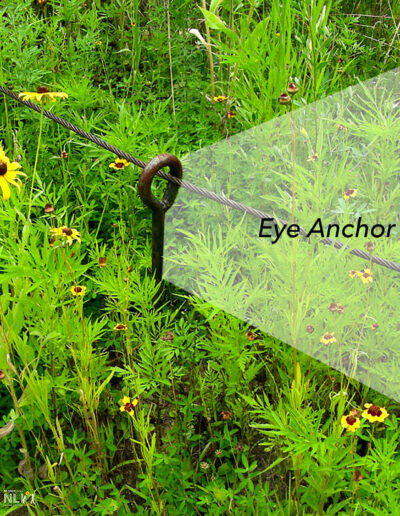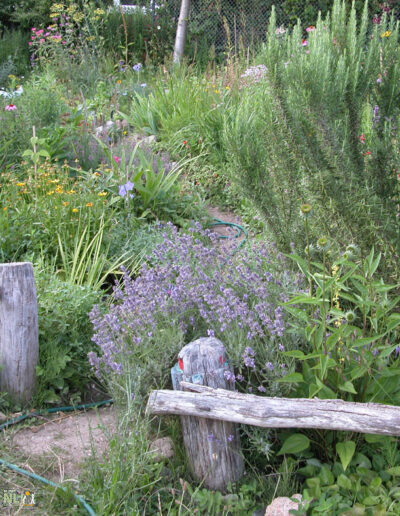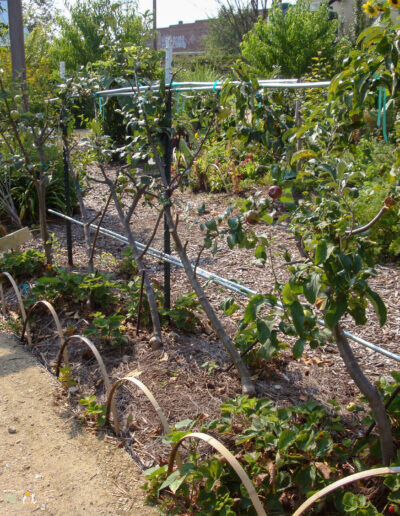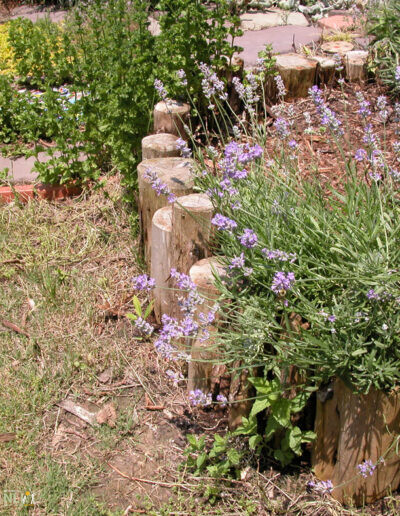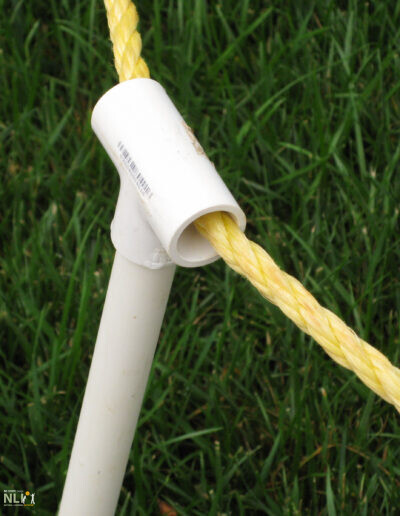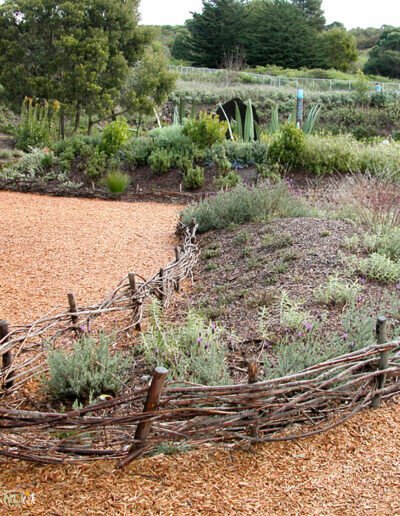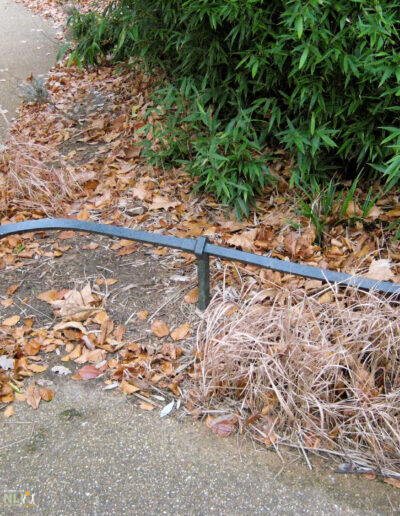14. Plant Bed Protection
Plant protection boundaries prevent children from inadvertently running through planting beds, especially in compact, high use areas adjacent to primary pathways. Protective edging prevents plants from being uprooted or trampled, delicate tree branches from being hung on, and roots from being compacted. Investing in plant protection boundaries will keep plants healthy and happy, allowing children to enjoy a naturalized outdoor learning environment for years to come.
Dimensions
In children’s areas, effective plant protection edging should range from 18–24 inches high. The burial depth of support will vary according to the material used. Thick wooden posts, depending on soil conditions, usually need 1/3-1/2 of length below ground to ensure stability. For logs used as edging, see details in RESOURCES, p2. When working with a lighter material, such as PVC, or wire, install difficulty is lessened. Sturdy “eye anchors” (top photo) are the easiest to install.
Design Principles
- Install plant protection edging immediately after plants are installed.
- Install plant protection edging just beyond the planting hole (ideally 3x the width of the root ball) to protect newly amended soil from compaction.
- Use plant protection edging to define edges of pathways, lawns, settings, and to direct circulation.
- Plant protection edging should be in place for a minimum of two years while plants get established.
- In high traffic areas, such as primary pathways, permanent edging may be necessary. Temporary edging may be sufficient in areas with minimal foot traffic.
- Free-standing trees can be protected individually or entire planting beds can be edged for protection.
- Create exploratory pathways with stepping stones or tree cookies to define routes through new planting beds.
Materials
Plant protection boundaries can be made from a wide variety of materials that respond to specific landscape types, available materials, and budgetary constraints. The simplest variations can be installed inexpensively with minimal skill. The most common materials used for plant protection, along with their benefits and drawbacks, are highlighted below.
Wood is a readily available, inexpensive material depending on its source and how it is treated. Re-purposed logs laid horizontally can be acquired at little or no cost and require very little time to install. Vertical wooden posts or logs will require significantly more labor to stabilize. While less expensive, untreated wood fencing will need to be replaced once it begins to decompose. To increase longevity, treat wood with an outdoor sealant.
Metal plant protection edging such as steel will likely be pre-fabricated and have a high initial cost. The benefit of metal plant protection, however, is that it is extremely durable, requires very little maintenance, and lasts longer than most other materials3.
Rope is an inexpensive and flexible material that can be used for plant protection in conjunction with wood posts or PVC piping. In addition to being low-cost, rope is a convenient material because it can easily be moved or modified as an OLE changes. However, rope fencing may be susceptible to damage from the elements.
PVC materials can be used as affordable, lightweight plant protection when coupled with rope. PVC works well for temporary protection but may not withstand long-term wear and tear.
Steel or aluminum wire fencing is an inexpensive and easy-to-install choice for plant protection. This type of fencing is also simple to store and move, with no additional tools required. While most wire fencing is durable to the elements, it is flimsy upon impact and may need replacing in the long-term.
Weed and Lawn Migration
Certain types of “solid” plant protection, such as logs and stacked stones, have the added benefit of slowing the migration of weeds, mulch, and lawn turf. This type of edging can greatly reduce time spent maintaining gardens.
Resources:
- Infosheet: Gathering Settings Created with Logs
- Eye Anchors: Minute Man Anchors www.minutemanproducts.com 828-692-0256 ; 800-438-727
Part 7648A; 5/8” / Black / Make sure to order “no disk

